 In the city with the big shoulders, known
as "the windy city" for its fiercely cold Lake Michigan wind and its corruption-laden, hot-air filled
politics, the city immortalized as "hog butcher for the world" and home of the blues, there exists the
oldest and most venerable musicians' organization in the country. Formed in 1965, it has boasted of up to one hundred
and fifty members and continues to grow in size and quality. Originally formed as an organization to help struggling
musicians find work, they became world renowned for their unique conception of music, jazz, and improvisation.
After changing the face of free jazz, they expanded their realm and addressed social concerns of the inner city.
They provided free music education and instruments to the children of inner-city Chicago. The members of this organization
continue to give musically challenging and entertaining concerts throughout the year, along with providing the
opportunity for community members to play with and learn from them. Their organization can lay claim to a member
that is responsible for creating the theme music for The Cosby Show, a member that has won the prestigious
Jazzpar award, one who has won the equally prestigious Jazzmaster award, a "Genius" (a
MacArthur fellow), and of many local legends (Webb n.p.).
In the city with the big shoulders, known
as "the windy city" for its fiercely cold Lake Michigan wind and its corruption-laden, hot-air filled
politics, the city immortalized as "hog butcher for the world" and home of the blues, there exists the
oldest and most venerable musicians' organization in the country. Formed in 1965, it has boasted of up to one hundred
and fifty members and continues to grow in size and quality. Originally formed as an organization to help struggling
musicians find work, they became world renowned for their unique conception of music, jazz, and improvisation.
After changing the face of free jazz, they expanded their realm and addressed social concerns of the inner city.
They provided free music education and instruments to the children of inner-city Chicago. The members of this organization
continue to give musically challenging and entertaining concerts throughout the year, along with providing the
opportunity for community members to play with and learn from them. Their organization can lay claim to a member
that is responsible for creating the theme music for The Cosby Show, a member that has won the prestigious
Jazzpar award, one who has won the equally prestigious Jazzmaster award, a "Genius" (a
MacArthur fellow), and of many local legends (Webb n.p.).
The Association for the Advancement of Creative Musicians formed in the middle of the nineteen sixties, amid cries
of black power, cries of unjustness, cries of grieving for black leaders lost to the guns of white supremacists,
and the cry of riots. Blacks were angry. Cofounder of the Black Panthers, Bobby
Seale, epitomized the anger in his book Seize the Time:
 |
When Malcolm X was killed in 1965, I ran down the street. I went to my mother's house, and I got six loose red
bricks from the garden. I got to the corner, and broke the motherfuckers in half. I wanted to have the most shots
that I could have, this very same day Malcolm was killed. I threw about half the bricks, and then I cried like
a baby. I was pissed off and mad. I thought that was all I could do. (3) |
It was time for action. It was time for them to take control of their lives.
In 1963, one hundred years after the signing of the Emancipation Proclamation, blacks fused their wish for an
end to racism with a new-found militancy (Radano 57). Marvin X. Jackman spoke for most of the black population
when he said that black people were "sick and tired, and tired of being sick and tired" (Anthony 1).
Blacks reached the boiling point in the early sixties and were ready for action. With the lack of success found
in Martin Luther King, Jr.'s passive resistance, blacks realized it was time to take charge of their lives, and
a rash of organizations formed to further their cause. Four organizations became instrumental in the "black
revolt" of the 1960s: the NAACP, SNCC, SCLC, and CORE. The National Association for the Advancement of Colored
People (NAACP) pursued anti-racism court cases, following their 1954 win in Brown v. Board of Education. The Student
Nonviolent Coordinating Committee (SNCC) began their efforts by staging sit-ins in segregated restaurants, starting
with a lunch counter in Greensboro, North Carolina. Martin Luther King, Jr.'s Southern Christian Leadership Conference
(SCLC) grew from the Birmingham bus boycotts of 1955. But perhaps most important for the AACM, was the Congress
of Racial Equality (CORE). Several members of the AACM, including alto saxophone player Anthony Braxton, joined
the Chicago-founded CORE and helped to combat racist employment, housing, and education policies (Meier 3). Blacks
also began to stage riots in protest of racism, bringing the cities of Harlem (1964), Watts, L.A. (1965), San Francisco
(1966), and then Oakland, California (1966) to their knees (Anthony 2). It was too much; it was time to hear the
cries.
It was also no surprise that the city Richard Wright called "the city from which the most incisive and radical
Negro thought has come" would become a major center for the civil rights movement. Chicago already had a reputation
for its radical politics, so it 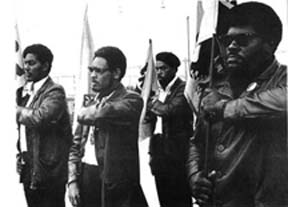 was no surprise when many civil rights groups became based in Chicago.
It was also no surprise that following Huey P. Newton and Bobby Seale's formation of the Black Panther Party for
Self-Defense on October 15, 1966, that they would launch a major regional center in Chicago (Seale 62). The Panthers
gained their infamy by openly brandishing rifles and pistols and following members of police departments to make
sure they did not unjustly disturb or harass blacks. Their seemingly extreme actions rose from several murders
of blacks and years of police brutality, and the existence of the Black Panthers would eventually culminate in
shoot-outs with police, including one that would kill their founder, Huey P. Newton. AACM saxophonist Anthony Braxton
attributed Chicago's success as a free jazz center to the city's social upheaval and the alternative movements
taking place, especially ones that centered in Chicago (Lock 48).
was no surprise when many civil rights groups became based in Chicago.
It was also no surprise that following Huey P. Newton and Bobby Seale's formation of the Black Panther Party for
Self-Defense on October 15, 1966, that they would launch a major regional center in Chicago (Seale 62). The Panthers
gained their infamy by openly brandishing rifles and pistols and following members of police departments to make
sure they did not unjustly disturb or harass blacks. Their seemingly extreme actions rose from several murders
of blacks and years of police brutality, and the existence of the Black Panthers would eventually culminate in
shoot-outs with police, including one that would kill their founder, Huey P. Newton. AACM saxophonist Anthony Braxton
attributed Chicago's success as a free jazz center to the city's social upheaval and the alternative movements
taking place, especially ones that centered in Chicago (Lock 48).
During the mid-sixties free jazz reached its zenith, as the free music began to associate with cultural freedom.
The squeaks, howls, and cries of free jazz were echoes of how blacks felt about their current situation. The white
jazz musicians of the sixties played "cool jazz," which featured a light beat that you could snap your
fingers to, catchy melodies, and a warm, bright sound. If there exists the possibility of an absolute opposite
of "cool jazz," it would be the black free jazz of the sixties. "Cool jazz" is melodic, warm,
and catchy, while New York free jazz saxophonist Archie Shepp describes the black free jazz of the sixties as "black,
angry, and hard to understand" (Radano 67). Blacks of the sixties were removing the identity placed upon them
in favor of one that they could define themselves. This consisted of moving away from the music conventions of
their oppressors, "cool jazz," and also loosening their ties with America, the country that enslaved
their ancestors and the country that continued to oppress them.
Members of The Art Ensemble of Chicago, the AACM's most famous group, became renowned for their stage costumes.
They wore African robes and face paint and utilized "little instruments," 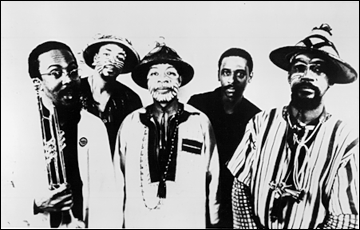 or small, often African, instruments that
"created texture." Muhal Richard Abrams also talked of the "little instruments having to do with
our thoughts regarding African instruments" (Giddins 194). In the early 1960's, with the help of black publications,
the "Black is Beautiful" campaign launched across America. Instigated by blacks' wish to separate from
the conventions of white, American society, the recent liberation of Africans from colonial rule provided a way
for them to connect with Africa.
or small, often African, instruments that
"created texture." Muhal Richard Abrams also talked of the "little instruments having to do with
our thoughts regarding African instruments" (Giddins 194). In the early 1960's, with the help of black publications,
the "Black is Beautiful" campaign launched across America. Instigated by blacks' wish to separate from
the conventions of white, American society, the recent liberation of Africans from colonial rule provided a way
for them to connect with Africa. 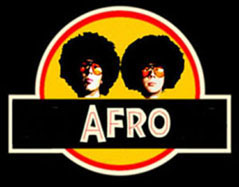 They began to give attention to the political happenings of Africa and listened to
the teaching of African scholars. At a time when the Western world focused on technology, industry, and science,
the simplicity of life of African tribes was appealing. To further distance themselves from the Western world,
black Americans adopted new fashions and the immortal "Afro" hairstyle. In Chicago, stores like the African
Look and African Lion started to appear and supply African products (Radano 96). As blacks began to gain a new
identity, both physically and mentally, the AACM adopted the motto "Great Black Music: Ancient to the Future"
when they formed. This emphasized their connection to ancient African music, the roots of jazz.
They began to give attention to the political happenings of Africa and listened to
the teaching of African scholars. At a time when the Western world focused on technology, industry, and science,
the simplicity of life of African tribes was appealing. To further distance themselves from the Western world,
black Americans adopted new fashions and the immortal "Afro" hairstyle. In Chicago, stores like the African
Look and African Lion started to appear and supply African products (Radano 96). As blacks began to gain a new
identity, both physically and mentally, the AACM adopted the motto "Great Black Music: Ancient to the Future"
when they formed. This emphasized their connection to ancient African music, the roots of jazz.
The formation of an organization of jazz musicians undoubtedly produced puzzled looks, as jazz has always focused
on individual virtuosity and fame. Jazz lovers talk of Miles
Davis and John Coltrane, while rock and roll
lovers talk of groups such as The Beatles and
The Rolling Stones. But the AACM was not the first of
its kind, The Jazz Composer's Guild of New York formed from a protest of the Newport Jazz Festival. Musicians felt
exploited by the Newport festival, so in 1964 they protested and formed a competing festival close to Newport called
The October Revolution in Jazz ("Sun Ra" 1). Jazz musicians in St. Louis and Detroit also beat Chicago
to the punch with the Black Artists' Group and Strata. Several musicians also formed their own record labels to
bypass the exploitative music companies, specifically the master bassist Charles Mingus and drummer Max Roach (Giddins
192-3). While other musicians' organizations formed before and after the AACM, none met with as much success or
produced as interesting music. But the success of the AACM was due to the factors surrounding its creation: the
civil rights movement, blacks' association with Africa, and the city in which it formed.
The jazz history of Chicago
entails brief bouts of productivity and fame, and the history began with the migration of New Orleans musicians
to Chicago in 1917 because of the closing of New Orleans' famed Storyville district (Morgenstern n.p.). Band leader
King Oliver and trumpet player Louis Armstrong 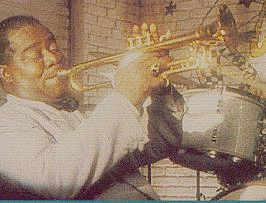 arrived in Chicago, proceeded to give Chicago national prominence
as a hub of good Dixieland music, and then left for bustling New York. Following Oliver and Armstrong's departure
from Chicago during the late twenties, the "windy city" would undergo a thirty-year hiatus from jazz
prominence. While Chicago was not void of producing talented jazz players, the jazz musician move to New York was
almost obligatory. Therefore, the term "Chicago jazz" lacked substantial meaning for thirty years. The
words "Chicago jazz" regained meaning in the mid-sixties with the AACM and become synonymous with creativity
and radicalism, just as the words "Chicago politics" conjure socialism, communism, and radicals. The
spontaneity, denseness, and playfulness of The Art Ensemble of Chicago, Anthony Braxton, Roscoe Mitchell, and Henry
Threadgill defined "Chicago jazz" during the sixties and continue to define it to this day. Chicago may
not be able to lay claim to a strong jazz history or jazz fame, but the members of the AACM try their best to prevent
the "second-city syndrome," or the imitation of the first city, New York. The AACM did not ignore the
avant-garde music of New York, but they did their best to create a music of their own and one that would bring
meaning back to the term "Chicago jazz."
arrived in Chicago, proceeded to give Chicago national prominence
as a hub of good Dixieland music, and then left for bustling New York. Following Oliver and Armstrong's departure
from Chicago during the late twenties, the "windy city" would undergo a thirty-year hiatus from jazz
prominence. While Chicago was not void of producing talented jazz players, the jazz musician move to New York was
almost obligatory. Therefore, the term "Chicago jazz" lacked substantial meaning for thirty years. The
words "Chicago jazz" regained meaning in the mid-sixties with the AACM and become synonymous with creativity
and radicalism, just as the words "Chicago politics" conjure socialism, communism, and radicals. The
spontaneity, denseness, and playfulness of The Art Ensemble of Chicago, Anthony Braxton, Roscoe Mitchell, and Henry
Threadgill defined "Chicago jazz" during the sixties and continue to define it to this day. Chicago may
not be able to lay claim to a strong jazz history or jazz fame, but the members of the AACM try their best to prevent
the "second-city syndrome," or the imitation of the first city, New York. The AACM did not ignore the
avant-garde music of New York, but they did their best to create a music of their own and one that would bring
meaning back to the term "Chicago jazz."
The AACM laid its early roots when some of the well-respected jazz musicians of Chicago formed a rehearsal band
called the Experimental Band. The Experimental Band included piano player Muhal Richard Abrams, tenor saxophonist
Eddie Harris, bass player Donald Garrett, and other local, South Side musicians. After internal disputes divided
the band in 1961, they reformed with the help of other South Side musicians like Jack DeJohnette (later played
with Miles Davis and John Coltrane) and a crew of friends from Wilson Junior College. The junior college bunch,
including saxophonists Henry Threadgill, Joseph Jarman, and Roscoe Mitchell, and the amazing bassist Malachi Favors,
were eager to play "free" music with other musicians; they had grown tired of the typical jazz of the
sixties. This new Experimental Band filled with musicians simply looking for a place to play their horns. Jazz
musicians had a hard time finding any work as jazz was on a decline. Clubs and radio stations rapidly changed their
music format to rock and left talented jazz musicians in the cold (Radano 80).
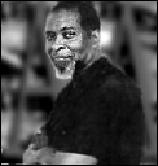 With the lack of work available for jazz musicians, especially
avant-garde jazz musicians, the Experimental Band became tightly knit as a group. Many of the members met regularly
at Muhal Richard Abrams' house and talked of music and other concerns and played their favorite jazz records. Abrams
quickly came to the forefront of this group and became a fatherly figure to many of the young musicians. Besides
his musical encouragement, he animated the musicians to follow other interests. His guidance, reminiscent of Martin
Luther King, Jr.'s inspired Joseph Jarman to write more poetry and for Roscoe Mitchell to begin painting again
(Radano 81). Abrams made it known that group cohesiveness was paramount, especially in the day and age of racial
oppression and discrimination.
With the lack of work available for jazz musicians, especially
avant-garde jazz musicians, the Experimental Band became tightly knit as a group. Many of the members met regularly
at Muhal Richard Abrams' house and talked of music and other concerns and played their favorite jazz records. Abrams
quickly came to the forefront of this group and became a fatherly figure to many of the young musicians. Besides
his musical encouragement, he animated the musicians to follow other interests. His guidance, reminiscent of Martin
Luther King, Jr.'s inspired Joseph Jarman to write more poetry and for Roscoe Mitchell to begin painting again
(Radano 81). Abrams made it known that group cohesiveness was paramount, especially in the day and age of racial
oppression and discrimination.
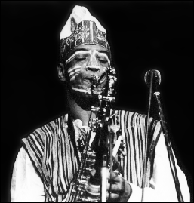 |
Until I had the first meeting with Richard Abrams, I was "like all the rest" of the "hip" ghetto
niggers; I was cool, I took dope, I smoked pot, etc. I did not care for the life that I had been given. In having
the chance to work in the Experimental Band with Richard and the other musicians there, I found the first something
with meaning/reason for doing. That band and the people there was the most important thing that ever happened to
me. --Joseph Jarman, 1967 (n.p.). |
Abrams soon began to encourage some of the musicians in the Experimental Band to branch off and form small groups
of their own. Many did, but jazz was on such a harsh decline that even the most popular players were having a hard
time finding work. Without work but not ready to give up music, several members of the Experimental Band started
to talk of forming a performance organization that would organize concerts and be exempt from the exploitation
of music companies and club owners. Abrams and a young R&B trumpet player named Phil Cohran finally turned
the talk into reality, and in May of 1965 the musicians spread the word across the South Side of the Association
for the Advancement of Creative Musicians (Radano 83).
Meetings of the AACM began successfully, and the organization coalesced. The members promptly voted on an organizational
structure and appointed founder Muhal Richard Abrams as the first president. They reaffirmed the goal of sponsoring
performances by members and drafted a rule that forced AACM groups to contain a majority of AACM musicians in them.
To become an AACM member a current member must nominate you, and then you must receive a majority vote in favor
of your acceptance. While the first meeting contained musicians representing bop, free jazz, rhythm 'n' blues,
and hard bop, the group took the direction of a free jazz organization. This direction met with success because
of a rule that made it mandatory to perform all original music and a rule that made performance in the avant-garde
AACM Big Band (developed from the Experimental Band) obligatory (Radano 88).
The AACM would soon gain a permanent mark on the jazz world after Chuck Nessa, a record producer for Chicago-based
Delmark Records, heard a concert performed by AACM member Roscoe Mitchell. 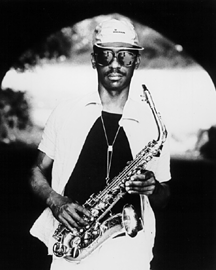 Impressed by the concert, he signed Mitchell to a record
contract the next day and convinced Robert Koester, owner of Delmark record label and The Jazz Record Mart, to
record him (Johnston). The subsequent album, Sound, was revolutionary in its approach
to jazz and its remarkable look at the basis of music: the interaction of sound and space in a musical line. Mitchell
felt that sound and silence should have an equal role in creating music. This was a break from the conventions
of New York free jazz: cacophony. With the success of this record, Down Beat and other publications started
to focus attention on the new musician's organization in Chicago. As a result of the success, the AACM was able
to focus on social concerns of the black population of Chicago along with their original purpose of finding work
for avant-garde jazz musicians.
Impressed by the concert, he signed Mitchell to a record
contract the next day and convinced Robert Koester, owner of Delmark record label and The Jazz Record Mart, to
record him (Johnston). The subsequent album, Sound, was revolutionary in its approach
to jazz and its remarkable look at the basis of music: the interaction of sound and space in a musical line. Mitchell
felt that sound and silence should have an equal role in creating music. This was a break from the conventions
of New York free jazz: cacophony. With the success of this record, Down Beat and other publications started
to focus attention on the new musician's organization in Chicago. As a result of the success, the AACM was able
to focus on social concerns of the black population of Chicago along with their original purpose of finding work
for avant-garde jazz musicians.
Following the success of Roscoe Mitchell's Sound, then Joseph Jarman's Song
For, and the music of The Art Ensemble of Chicago, the AACM decided to expand
its breadth from a performance organization to a social-help organization as well. In 1969, the AACM musicians
began to give free lessons to inner-city youth and even went beyond the scope of their goals to provide free instruments
for children. They asked for donations from philanthropic organizations and people, and then bought used instruments,
repaired them, and gave them to kids. The AACM also began to give free lessons, called "master classes,"
to aspiring adults. Every Saturday night in the AACM's complex on the South Side, an AACM member gives a three
hour "master class." Musicians are also always welcome to play with AACM members in informal jam sessions.
With New York's absolute monopoly on jazz musicians for the greater part of this century, one wonders how Chicago,
eight hundred miles from New York City, would become a major center of free jazz in the sixties. Record producer
Chuck Nessa revealed his reasoning in an interview:
 |
It wasn't part of the mainstream. All the new cats went to New York. But they were all following each other. Chicago
being that much removed had time to step back and reflect on the scene and not worry about coming against someone
and trying to outblow Albert Ayler tomorrow night in a loft. But they could think, 'What are our possibilities?'
The isolation presented the opportunity. (Johnston) |
Anthony Braxton echoes these sentiments when he talks of everyone in New York being ready "to make it."
The Chicago musicians had time to practice and to communicate with each other (Lock 49). Nessa also goes on to
talk about the New York "jazz machine" and its effect on the scene.
 |
There were a couple of reasons for the AACM happening in Chicago. One, I think in general that the scene in Chicago
was a bit more self-reliant than in New York. I mean in New York there was this machine and hierarchy that had
been in place for a long time. You had to get used to this and adapt to it. In Chicago it was a bit more wide open.
But primarily, it was just because of the personalities that occurred at the time. They happened to be coming up
at the right time. (Nessa) |
The Chicago free musicians' music was an obvious parting from the current musical ways of New York. While New
York overflowed with genius musicians and fresh ideas, once a new idea caught on, all the musicians followed it.
Saxophonists John Coltrane, Albert Ayler, and Archie Shepp, and piano player Cecil Taylor defined the direction
of jazz in the sixties. They played loud, busy, fast music, which relied on the energy the music provided and not
so much on the notes played. This music became known as kinetic-energy music, a direction the Chicago musicians
did not want to take.
 |
The big thing at the time prior to the them was energy music, you know, all out blowing. The AACM in general was
concerned with how to organize sound and how to use these sounds, and energy was just part of this. We have all
of these techniques now, and how do we organize them? They composed and improvised with this in mind. I think that
is their primary contribution, it was the organization and use of all of these techniques. (Nessa) |
After breaking the jazz taboo of not organizing, the Chicagoans, especially the Art Ensemble of Chicago, broke
another of jazz's ancient taboos. The music of The Art Ensemble is funny. The Art Ensemble's patented "little
instruments" gave them fame. Used to "create texture," they often became tools for a playful and
fun performance. They would take five hundred "little instruments" with them to concerts, including bike
horns, kazoos, gongs, cymbals, ratchets, and maracas. 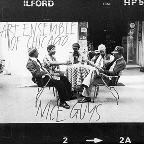 When they toured France, they took two tons of instruments with them.
With John Coltrane and Albert Ayler's utterly serious
music, the Art Ensemble's was a clash. Coltrane was an extremely driven man who was on a spiritual quest in the
1960s to communicate with God through music. His music was an out-pouring of soul, and bike horns would not have
blended well. The Art Ensemble also frequently delved into other forms of music while performing. During the album
Nice Guys they threw in elements of reggae and ska. They also performed satirical
pieces like "Rock Out," and they often encored with a sixties-ish funk tune. The Art Ensemble's stage
clothing also produced laughs: most members wore African robes, while trumpet player Lester Bowie donned a surgeon's
cape. This is relative to their motto "Great Black Music: Ancient to Future," with the ancient being
the African robes and the future being the surgeon's cape (science), but it also had intentions of laughter.
When they toured France, they took two tons of instruments with them.
With John Coltrane and Albert Ayler's utterly serious
music, the Art Ensemble's was a clash. Coltrane was an extremely driven man who was on a spiritual quest in the
1960s to communicate with God through music. His music was an out-pouring of soul, and bike horns would not have
blended well. The Art Ensemble also frequently delved into other forms of music while performing. During the album
Nice Guys they threw in elements of reggae and ska. They also performed satirical
pieces like "Rock Out," and they often encored with a sixties-ish funk tune. The Art Ensemble's stage
clothing also produced laughs: most members wore African robes, while trumpet player Lester Bowie donned a surgeon's
cape. This is relative to their motto "Great Black Music: Ancient to Future," with the ancient being
the African robes and the future being the surgeon's cape (science), but it also had intentions of laughter.
The Chicago free jazz musicians also made critical moves in the thematic structure of the music. Usually in jazz
songs, the melody (or head) comes first, then the instrumentalists solo over the chord changes, and then replay
the melody at the end. With the release of Roscoe Mitchell's Sound, the Chicago musicians made it known
that they would not conform to this age-old way of playing jazz songs. Instead, a melody may not even exist; if
a melody did exist, they placed it randomly in the song. And instead of one player improvising while the rhythm
section set a background (comping), they would all improvise at the same time.
These moves to separate their music from that of New York may have been natural for a group of extremely creative
musicians, but it also fit into Chicago's overall sentiment towards New York: they had to be better. Chicago is
the city that feels it needs to be the best. It set itself apart with the largest building in the world, the greatest
architecture in the United States, some of the most radical politics in America, and the newest, most creative
jazz in the universe.
Trumpet player Leo Smith points out that "the importance of the AACM today is that it never ran out of
steam." In 1996, the music school is flourishing and the AACM boasts of several successful new members. Chico
Freeman, son of famed Chicago tenor saxophonist Von Freeman, leads a successful musical career, along with Edward
Wilkerson Jr., who leads two avant-garde groups in Chicago. In 1994, AACM saxophonist Anthony Braxton received
a $300,000 "Genius grant," (MacArthur Fellowship)
(Braxton n.p.). The AACM currently receives support from the National Endowment for the Arts, MacArthur Foundation,
Columbia University, and the Illinois Arts Council (Webb n.p.). As the AACM
now exists as the oldest and most thriving organization of its kind, it is possible to see with clear light why
the AACM flourished in Chicago during the 1960s and why it still exists as a flourishing organization for the advancement
of creative music.
Works Cited
Anthony, Earl. Picking Up the Gun: A Report on the Black Panthers.
New York: Dial, 1970.
"Art Ensemble of Chicago: Live from the Jazz Showcase." Videotape. New York: Rhapsody Films, 1981.
50 min.
Balliett, Whitney. Night Creature: A Journal of Jazz, 1975-1980. New York: Oxford
UP, 1981.
Braxton, Anthony. "Braxton Short Bio." Anthony Braxton's Tri-Centric Foundation.
URL: http://www-osf.wesleyan.edu/music/braxton/abbio.html
(7 Dec. 1996)
Carson, Clayborne. In Struggle: SNCC and the Black Awakening of the 1960s. Cambridge: Harvard UP, 1981.
"Civil Rights Movement." Encyclopedia Britannica Online.
URL:http://www.eb.com:180/ (30 Nov. 1996)
CLIMB. "Black History in 1965." The Black History Database.
URL: http://www.ai.mit.edu/~isbell/HFh/black/searchYear.doit?year=1965
(30 Nov. 1996)---
. "Black History in 1966." The Black History Database.
URL: http://www.ai.mit.edu/~isbell/HFh/black/searchYear.doit?year=1966
(30 Nov. 1996)
Davis, Francis. In the Moment: Jazz in the 1980s. New York: Oxford UP, 1986.
--- . Outcats. New York: Oxford UP, 1990.
Gididins, Gary. Riding on a Blue Note: Jazz and American Pop. New York: Oxford UP, 1981.
Jarman, Joseph. Liner Notes. As if it Were the Seasons. Chicago: Delmark, 1968.
Johnston, Mike. Interview. "Anything is Possible." With Chuck Nessa.
Natl. Public Radio. WCMU. Mt. Pleasant, Michigan.
Jost, Ekkehard. Free Jazz. Vienna: Universal Edition, 1974.
Kenney, William Howland. Chicago Jazz: A Cultural History, 1904-1930. New York:
Oxford UP, 1993.
Litweiler, John. The Freedom Principle: Jazz After 1958. New York: William Morrow, 1984.
Lock, Graham. Forces in Motion: The Music and Thoughts of Anthony Braxton. New York: Da Capo, 1988.
Meier, August and Elliot Rudwick. CORE: A Study in the Civil Rights Movement, 1942 1968. New York: Oxford
UP, 1973.
Morgenstern, Dan. "Jazz Comes North." History of Jazz.
URL: http://jazzcentralstation.com/jcs/station/newsstan/history/213thist.html
(5 Dec. 1996)
Murray, Albert. The Omni-Americans: New Perspectives on Black Experience and American Culture. New York:
Outerbridge & Dienstfrey, 1970.
Nessa, Chuck. Personal Interview. 29 November 1996.
Radano, Ronald M. New Musical Figurations: Anthony Braxton's Cultural Critique. Chicago: U of Chicago
P, 1993.
Seale, Bobby. Seize the Time: The Story of the Black Panther Party and Huey P. Newton.
New York: Random House, 1968.
"Sun Ra." New Jazz Archives. URL: http://www.eyeneer.com/Jazz/Sunra/
(3 Dec. 1996)
Ullman, Michael. Jazz Lives. New York: Perigee, 1980.
Webb, Floyd. "Association for the Advancement of Creative Musicians." Great Black Music.
URL:http://csmaclab-www.cs.uchicago.edu/AACM/AACM_HOME_PAGE.html
---. "AACM Goals." Great Black Music.
URL: http://csmaclab-www.cs.uchicago.edu/AACM/GOALS.html
(30 Nov. 1996)
Werner, Craig. "Leon Forrest, the AACM and The Legacy of the Chicago Renaissance."
The Black Scholar 23.3&4: 10-23.
This project was created by Sam Ottenhoff, December 1996.
Created for freshman history seminar, Chicago Arts & Culture, Professor
Peter Rutkoff.
 In the city with the big shoulders, known
as "the windy city" for its fiercely cold Lake Michigan wind and its corruption-laden, hot-air filled
politics, the city immortalized as "hog butcher for the world" and home of the blues, there exists the
oldest and most venerable musicians' organization in the country. Formed in 1965, it has boasted of up to one hundred
and fifty members and continues to grow in size and quality. Originally formed as an organization to help struggling
musicians find work, they became world renowned for their unique conception of music, jazz, and improvisation.
After changing the face of free jazz, they expanded their realm and addressed social concerns of the inner city.
They provided free music education and instruments to the children of inner-city Chicago. The members of this organization
continue to give musically challenging and entertaining concerts throughout the year, along with providing the
opportunity for community members to play with and learn from them. Their organization can lay claim to a member
that is responsible for creating the theme music for The Cosby Show, a member that has won the prestigious
Jazzpar award, one who has won the equally prestigious Jazzmaster award, a "Genius" (a
MacArthur fellow), and of many local legends (Webb n.p.).
In the city with the big shoulders, known
as "the windy city" for its fiercely cold Lake Michigan wind and its corruption-laden, hot-air filled
politics, the city immortalized as "hog butcher for the world" and home of the blues, there exists the
oldest and most venerable musicians' organization in the country. Formed in 1965, it has boasted of up to one hundred
and fifty members and continues to grow in size and quality. Originally formed as an organization to help struggling
musicians find work, they became world renowned for their unique conception of music, jazz, and improvisation.
After changing the face of free jazz, they expanded their realm and addressed social concerns of the inner city.
They provided free music education and instruments to the children of inner-city Chicago. The members of this organization
continue to give musically challenging and entertaining concerts throughout the year, along with providing the
opportunity for community members to play with and learn from them. Their organization can lay claim to a member
that is responsible for creating the theme music for The Cosby Show, a member that has won the prestigious
Jazzpar award, one who has won the equally prestigious Jazzmaster award, a "Genius" (a
MacArthur fellow), and of many local legends (Webb n.p.). 








